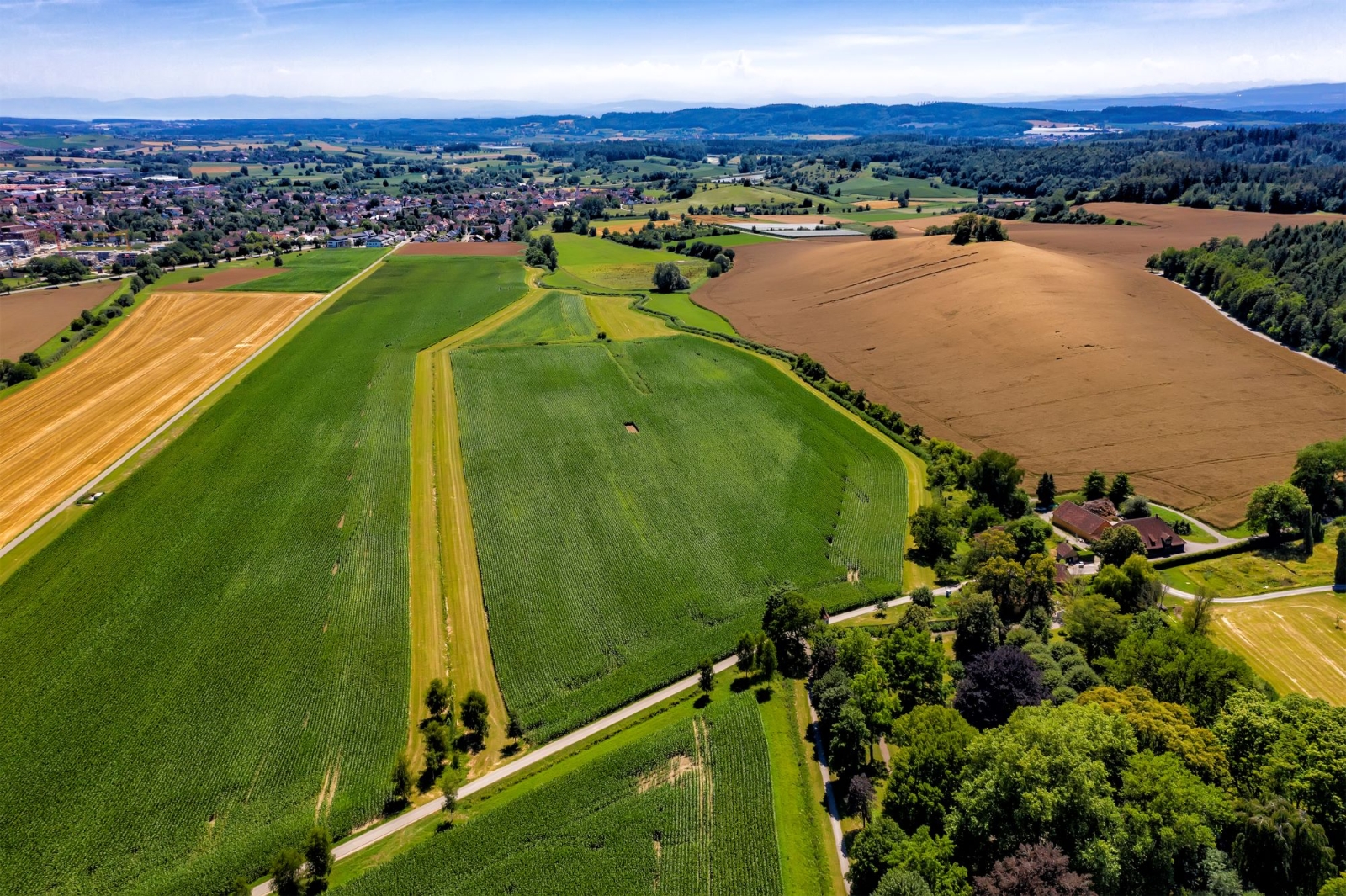* Álvaro Conde and Alex Colloricchio contributed to this article
A global transition towards a sustainable food system is long overdue, scientists agree: and although farming has long been absent from UN climate negotiations, this year’s COP promises to put food centre-stage at talks in Dubai. World leaders coming together to discuss the link between food and climate ‒ and set targets accordingly ‒ will be a historic moment, according to the World Resources Institute’s Edward Davey.
Currently, one-third of all greenhouse gas (GHG) emissions can be attributed to the global food system alone, and it’s the single largest driver of the transgression of planetary boundaries ‒ of which we’ve already passed six of nine. Food production is still barrelling upwards: by 2050, we may have 10 billion mouths to feed, a task proving increasingly difficult as shifting climates around the world trigger droughts and floods and intensive farming practices leach soils of vital nutrients.
A fundamental reimagining of the entire food system is on the menu ‒ and fortunately, viable solutions exist, although not yet at scale. Many of these solutions are grounded in the circular economy, a simple set of strategies with transformative potential. The Circularity Gap Report 2023, the 6th edition of Circle Economy Foundation’s flagship report launched yearly, has found that a circular food system alone could reverse the overshoot of two planetary boundaries, while bringing others back to safer levels. Through three globally-coordinated actions ‒ cutting food waste, prioritising healthy, sustainable, plant-based diets and ensuring food is produced regeneratively ‒ the phosphorus cycle can jump from 33% above the boundary to 7% below it, while land-system change can fall from 47% above the boundary to a staggering 66% below.
Circle Economy Foundation research finds that three circular solutions can turn the tide on the overshoot of planetary boundaries. Reductions are expressed in percentage points. Note that the chemical pollution, release of novel entities and stratospheric ozone depletion boundaries were not measured. (Image by Circle Economy Foundation)
End avoidable food waste
Food waste and food insecurity are strange bedfellows: in a grimly ironic twist, one-third of all the food produced globally is lost or wasted, while one-third of people go hungry. It’s estimated that the food that is lost and wasted around the world could feed 1.26 billion people each year. Waste and losses occur along the supply chain, from farm to fork—and may account for as much as one-tenth of global GHG emissions, nearly one-quarter of total freshwater used for food production, and nearly one-quarter of both global cropland and fertiliser use. Producing food that ends up in the bin, uneaten, is also pushing several planetary boundaries to ‒ or beyond ‒ their limits.
Halving food waste alone could reverse the overshoot of the land-system change boundary, according to Circle Economy Foundation: bringing it from 47% above the boundary to 60% below. Pressures on others will lessen, with phosphorus dropping to near-safe levels, just 2% above the boundary.
Although the potential impact could be significant, the how is less clear-cut. Means for reducing food waste so drastically will vary widely depending on context and location: in lower-income nations, where food losses are more prevalent, increased and affordable access to cold storage will be crucial, for example. Nigeria-based ColdHubs offers a solar-powered, cooling-as-a-service solution to smallholder farmers at a flexible, pay-as-you-store rate ‒ an initiative that saved more than 20,000 tonnes of food from spoiling in 2019 alone.
Across the world and at the other end of the supply chain, the municipality of the Hague is redirecting food waste from one of the Netherlands’ largest supermarket chains to restaurants that can make use of it, saving it from landfill. Digital solutions are also having an impact at the local level, with apps like Too Good To Go helping consumers salvage food from ending up in retailers’ and restaurants’ bins at the end of the day.
Also read: THE NETHERLANDS, CIRCULAR BY DESIGN
Ensure people-and-planet healthy diets are available for all
Meat-centric, heavily processed diets around the world are taking their toll. Although historically limited to high-income countries, meat consumption is now surging in emerging economies: a preference for animal protein has skyrocketed along with incomes, doubling globally between 1990 and 2021. Now, nearly 90% of deforestation is driven by agriculture ‒ much of which can be attributed to livestock grazing or the production of crops to feed farm animals, like soy and corn. Nearly one-third of biodiversity loss and 14.5% of global emissions can be linked to livestock. It’s also fundamentally inefficient: raising animals for food gobbles up 80% of the globe’s agricultural land, in exchange for just 15% of calories consumed. Now, countries around the world are clamouring for change, especially as health concerns linked to the overconsumption of highly-processed foods ‒ including processed meat ‒ are taking root. Fortunately, sustainable diets are shown to also be healthy: one doesn’t have to come at the expense of the other.
Putting healthy, satiating and more plant-based foods first could be highly impactful, according to Circle Economy Foundation’s model: land-system change could fall from 47% above the boundary to 60% below. Limiting daily calories to under 3,000, substituting sugary foods and beverages with fruits, vegetables and nuts, and adopting a plant-based diet were all considered. The land freed-up from lowering livestock production was rewilded: converted into forest, for example, to recreate thriving, biodiverse ecosystems.
The reality of transitioning the diets of billions is not so cut and dry: backlash will be inevitable, and progress likely slow. Raising awareness among consumers (think information campaigns or eco-labelling) or nudging behaviour through taxes may help lower meat consumption. Guidelines of this ilk are beginning to emerge around the world: China, for example, which consumes more than one-quarter of the world’s meat, has issued a plan to cut its citizens’ meat consumption in half, while England’s latest Food Strategy recommends that meat consumption is cut by 30% within a decade. Public procurement will also be a crucial tool through which to prioritise, healthy, plant-based options ‒ in schools, hospitals and prisons, for example.
Also read: THE TRUE COST OF OUR FOOD
Mainstream regenerative agriculture and sustainable food production
Heavily industrialised food production has changed the geographical fabric of the world: despite the rapid expansion of cities over the past half century, only 1% of the globe’s surface is inhabited by urban land. Cities are vastly overshadowed by agricultural land, which claims roughly half of the habitable surface of the planet ‒ driving deforestation in the process. Our highly-globalised food system also means we’re transporting food around the world, or pouring energy into hot-housing to grow out-of-season foods. Intensive agriculture has also triggered a steep upwards trend in the use of synthetic fertilisers: an increase of more than 13 times over the last century.
Although this has boosted productivity and improved food security for many, it’s also had severe consequences: the production of nitrogen fertiliser alone, for example, is responsible for as much as 1.4 billion tonnes of carbon dioxide equivalent per year, while nutrient pollution from fertilisers has been linked to the creation of over 400 ocean ‘dead zones’ around the world. Soil health has also suffered, leading to lower productivity and thus increasingly heavy fertiliser use ‒ a vicious cycle only set to worsen without the adoption of regenerative farming principles at scale.
Shifting focus to organic, local and seasonal production could bring phosphorus levels to 32% below the boundary, the report found: this would mean halving the transport of some food items due to greater preference for local options and eschewing chemical fertilisers in favour of natural alternatives. Many on-the-ground initiatives are providing viable alternatives to synthetic fertilisers: black soldier flies, for example, can be used to convert organic waste into natural fertilisers as well as high-protein, low-impact animal feed ‒ with the added benefit of diverting waste from landfill. Procurement may also serve as a crucial tool for boosting local and seasonal food consumption: the City of Paris’s Sustainable Food Plan, for example, sets targets for organic, local and seasonal produce to be served in more than 1,000 schools, retirement homes and staff restaurants, which collectively serve around 30 million meals each year.
Also read: ARTIFICIAL INTELLIGENCE TO SUPPORT EUROPEAN TRANSITION TO HEALTHY SOILS
A circular food system is critical to fight climate breakdown
Food production will likely always claim a huge portion of the global economy’s material use ‒ but we need a ‘new normal’ for the sector to be compatible with planetary boundaries, and foster, instead of fight, ecological health. The coexistence of staggering food waste and food insecurity is not just inefficient, but unethical ‒ and we have the solutions in hand to turn the tide on both. At scale, a circular food system can nourish soil, bolster biodiversity and foster greater resilience, all while lessening pressure on planetary boundaries and fighting climate breakdown.
The strategies laid out in this article could substantially lower nitrogen levels, from 59% above the boundary to 28% above the boundary ‒ a reduction in atmospheric nitrogen equal to the nitrogen requirements of the majority of nonlegume crops covering Africa. And perhaps more interestingly, for the climate-conscious reader: they could bring climate change from 191% to 181% above the boundary. This seemingly-small drop could actually reduce atmospheric CO2 levels by the same amount added to the atmosphere in the 14 years between 2008 and 2022.
With the topic of food finally on the menu at COP28 ‒ backed by insistence from a global coalition of some of the world’s biggest food companies and environmental organisations ‒ the coming weeks will be pivotal. There’s no time to lose: a circular food system is no longer an option ‒ it’s a necessity.
This article is also available in Italian / Questo articolo è disponibile anche in italiano
Cover image: Envato




